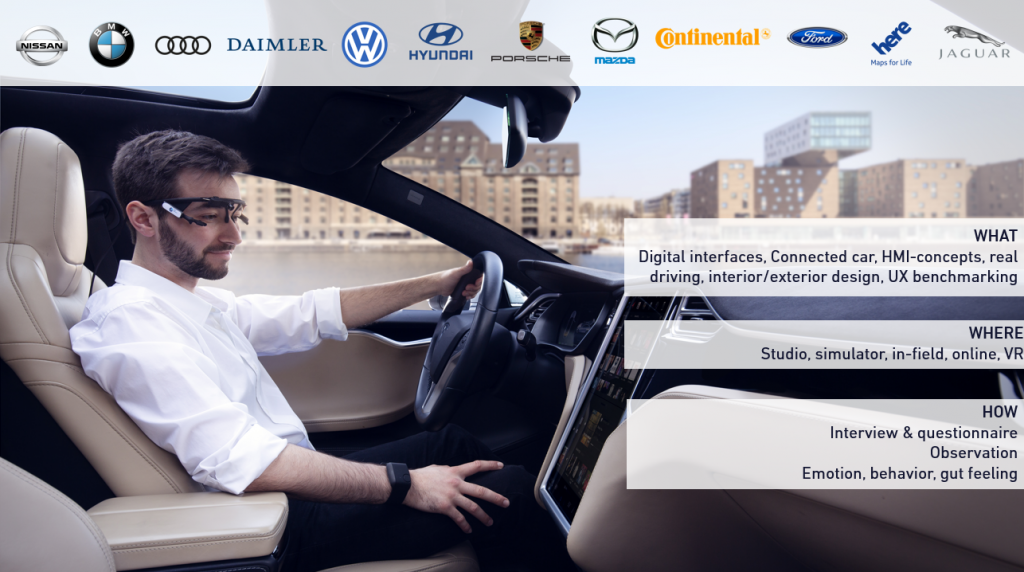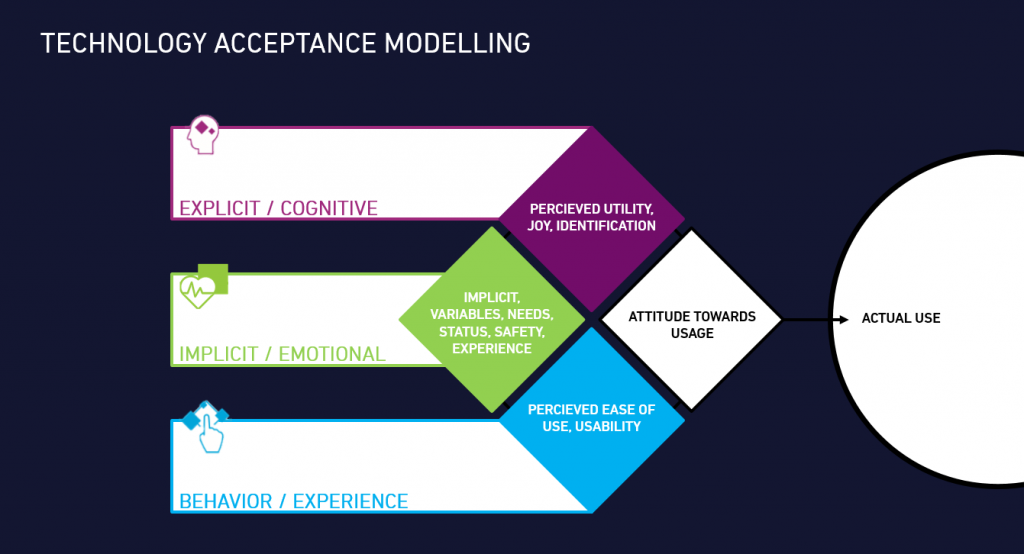eye square offers UX optimisation and consulting for the automotive industry for over 10 years. Psychological know-how and latest methods are combined to offer best insights for various product and scenarios. Our implicit methods are specifically adapted for the automotive world.
eye square’s consultants are experts in:

Measuring and choosing valid methods is important, when testing products, that will be used inside a car. Adapting our eye-tracking systems to the ISO 14007 norm as well as measuring cognitive load to model the driver’s level of distraction while driving in the simulator or on the real world, brings methods and methodological know-how together.

Understanding the user
eye square research model combines the use of explicit and implicit methodologies to reflect on users opinion, behavior and needs. eye squares consultants bring behavioral science and psychological background to ensure research quality in qualitative as well as in quantitative UX studies.
EXPLICIT/COGNITIVE – perceived utility, explicit statements and questionnaires
IMPLICIT/EMOTIONAL – needs and emotional reactions can be measured physiologically or with our implicit research technologies
BEHAVIOR/EXPERIENCE – ease of use and attention measurement with light weight automotive research kit.
ATTITUDE TOWARDS USE – prediction of actual usage is a key asset for benchmarking, modeling and driver analysis
User Needs
The car becomes a new touchpoint – connecting with the world and the internet of things. Understanding the changing needs and expectations that different segments of users have is an important step to gain empathy and develop systems that show empathy for the customer.
Security
Meaning
Stimulation
Competence
Popularity
Relatedness
Human needs are changing and evolving especially with new innovative technologies in a changing world of mobility. Our research methods and questionnaires have to adapt to identify the best ideas and working concepts in early stages of product design.
The interfaces of today and tomorrow’s cars not only grow in size, but also in complexity. The possibilities of autonomous vehicles and the digital cockpit are re-shaping the entire driving experience.
The driver’s attention has never been challenged more at least when we are driving in level 1-3 cars. Interfaces of all kinds offer multimodal interaction possibilities that can make the life of the driver not only easier but also safer if designed carefully.
Understanding how users interact with on the market cars or full featured prototypes needs constant evaluation. The preferred interaction while driving is difficult to asses directly. The graphical UI is so dominant that they use it more than they actually realize.
Get more insights and explore our findings by downloading our whitepaper here:
You are currently viewing a placeholder content from reCAPTCHA. To access the actual content, click the button below. Please note that doing so will share data with third-party providers.
More InformationYou need to load content from Turnstile to submit the form. Please note that doing so will share data with third-party providers.
More Information